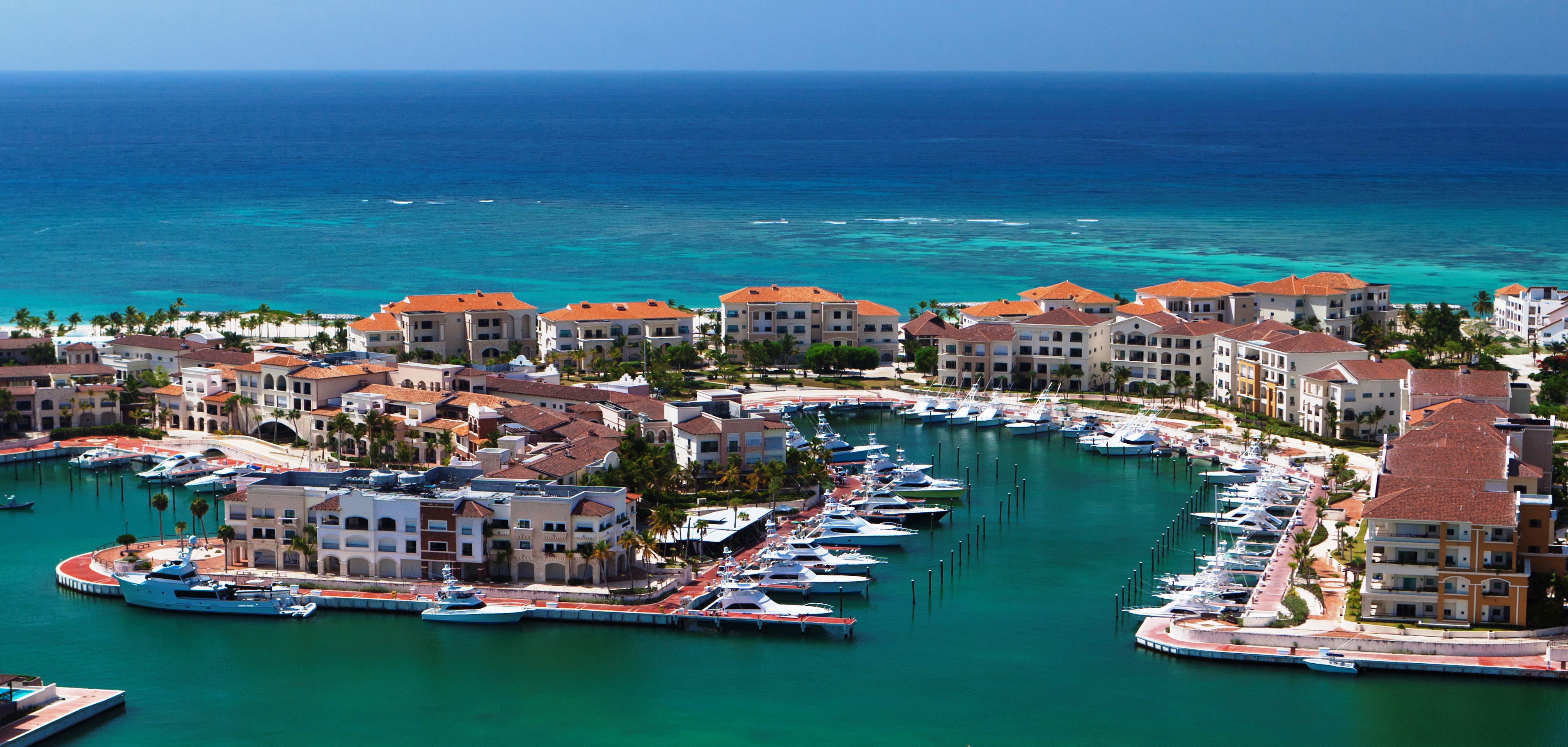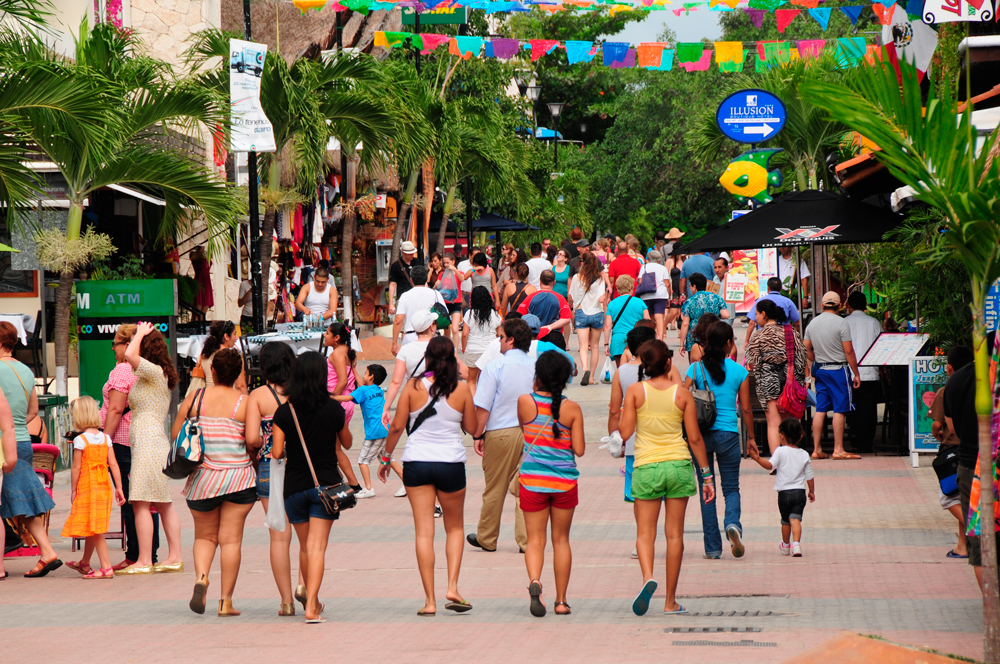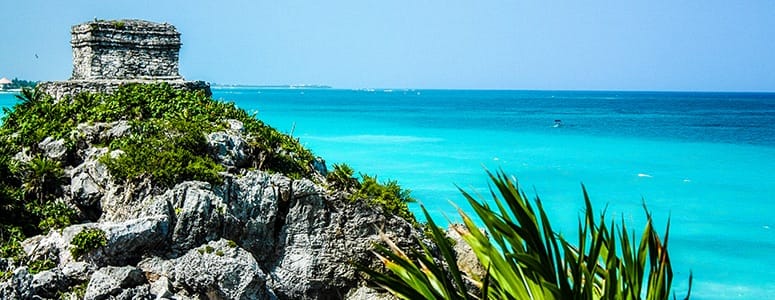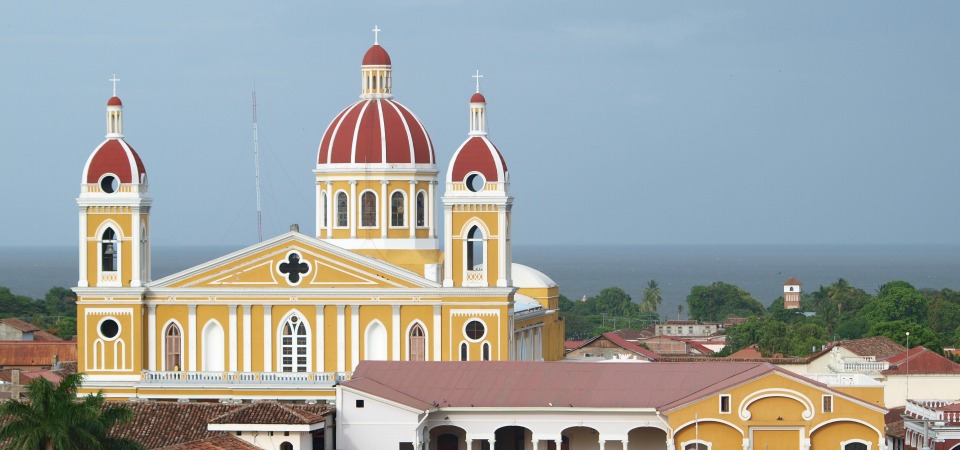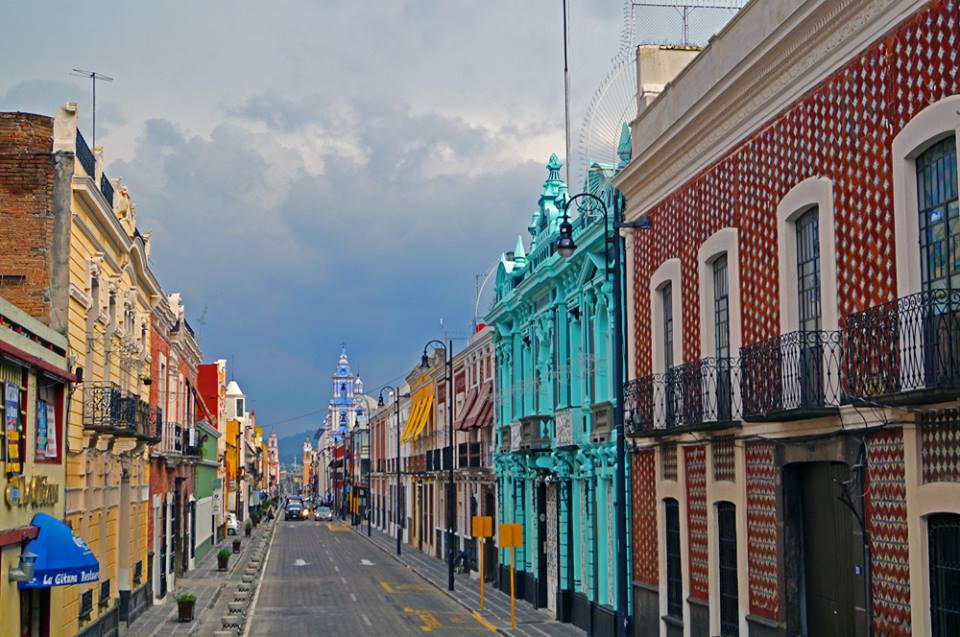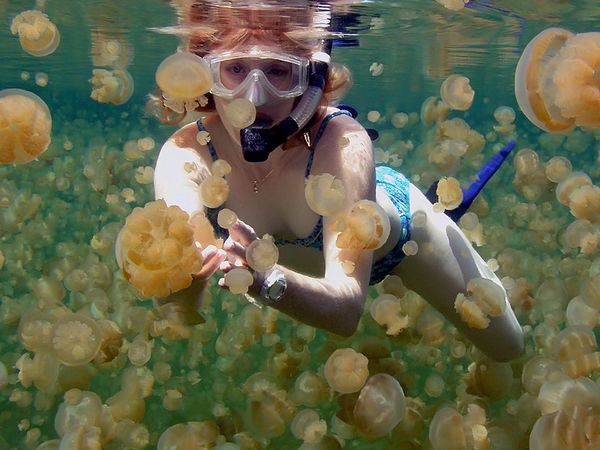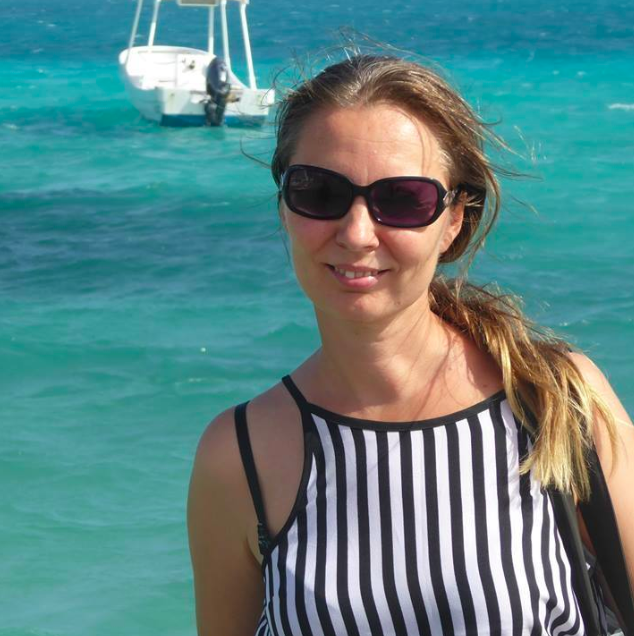Ok so you’ve reached an age where you want to get off the treadmill early and you don’t have a million dollars in the bank. How will you survive? Can you sustain your lifestyle currently living in the country you’re in? Chances are if you’re truly honest the answer is you can’t. So what options do you have? Well as we are discovering there are numerous cities that offer more than living in the suburbs miles form the beach and other amenities. However you may have to adjust you living standards. People thinking of moving often ask expats, “What does it cost to live there?” Just like anywhere else in the world, it depends on many factors like lifestyle, family size, and needs. Lifestyle is the biggest defining factor, and if you’re not expecting to change it, expect to pay more.
Our budget is $100AUD per day for two people. These are some of the great places we can live based on extensive research and visiting some of the places already.
1. Lazy days at the beach in Playa del Carmen
It’s no wonder its number one for us. We loved Playa del Carmen and it’s on our radar from 2020 when we plan to travel full time and slow travel the globe.
Many people from the U.S. and Canada know the Riviera Maya well…from vacations to the all-inclusive resorts that line the coast, especially in the world-famous “hotel zone” in Cancún.
But head 45 minutes south on the Yucatán Peninsula, and you’ll find another vacation destination, one that a large number of foreigners have made their permanent home. It’s called Playa del Carmen. And they love this rapidly-growing city by the Caribbean Sea for the same reason tourists from around the world visit. Year-round warm weather; a plethora of white-sand and golden-sand beaches on turquoise Caribbean waters; modern conveniences like high-speed internet; great shopping and restaurants—including brands and cuisines you know from home; a variety of outdoor activities like snorkeling, scuba, boating, and fishing; the welcoming local population and active expat groups; and so much more.
Oh, and who could forget the tacos, tortas, ceviche, and other tasty Mexican cuisine that you’ll have at your fingertips (all of it tasting so much better than what you find in the U.S.).
Playa del Carmen is already a popular haven for retirees, hosting a significant portion of the Americans who live in Mexico. There are also many “snowbirds,” among them many Canadians who start coming down after Christmas and stay until about April.
The influence of tourism, and the large numbers of expats, means speaking Spanish is not strictly necessary if you live in the city, as many locals speak English. But learning Spanish and trying it out with your new neighbors, your landlord, local shopkeepers, and others will help you adapt and make your experience in this new culture much richer.
This city offers plenty of other benefits to retired expats too. Healthcare in Mexico is excellent and available at a low cost. That’s certainly true in Playa del Carmen, which has several private hospitals that offer specialist care, diagnostic testing, emergency rooms, and even full service for surgeries and procedures. You can use insurance or pay cash—it’s about $30 to $50 for a doctor’s visit, for example, with even serious procedures costing a fraction of what it would in the U.S.
Mexico also makes it easy for retirees to set up official residence. The temporary resident permit requires about $2,000 a month in income—that covers the applicant and one dependent. Some expats simply live in Mexico with a tourist visa, which is valid for six months at a time and can be renewed indefinitely by leaving the country and re-entering.
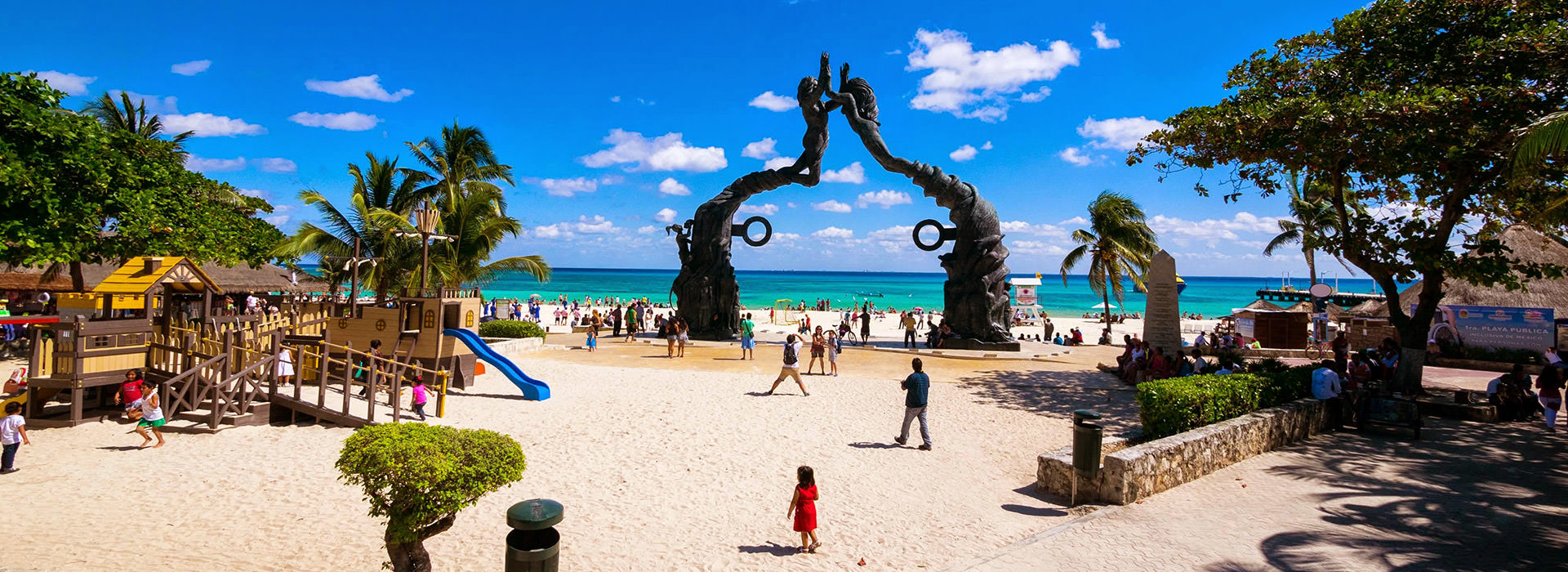
Residents of Playa del Carmen also benefit from the Cancún International Airport being just a short drive north. You can travel to and from your home country or have friends and family visit you cheaply and easily thanks to many direct flights to the U.S. and Canada.
Playa (as the locals call it) has a sophisticated…jet-set…almost European feel. Stroll down the famed Quinta Avenida (5th Avenue), parallel to the beach, and you’ll see why. Smart boutiques, outposts of luxury brands like Victoria’s Secret, French bakeries, beach clubs that you might see in Ibiza or Miami…it’s all there.
But don’t fear.
It’s still a casual life by the beach, where shorts and flip-flops are always acceptable attire. And you’ll find plenty of local places with mismatched chairs but to-die-for tacos (less than a buck each)…and an ample selection of mescals and tequilas unknown outside of Mexico. There is also a bustling authentic Mexican town away from this high-end area where you can escape the tourists. (And don’t worry, the Riviera Maya is one of the safest regions in Mexico.)
The local expat community is active, with plenty of happy hour gatherings, dinners out, and parties at home to enjoy, as well as volunteer work, yoga classes, cultural events, and other things to do. It doesn’t have to be a party all the time, by any means.
The atmosphere is relaxed and fun, with plenty of time spent outdoors, whether it’s people watching with a cappuccino at an outdoor café, relaxing at the beach in a lounger with a beer in hand, or heading offshore to see the underwater wonders at the second-largest coral reef system in the world. Scuba, snorkeling, boating, fishing, exploring Maya ruins…there’s plenty of outdoor activities to keep you active in and around Playa del Carmen.
In recent years, American travelers and expats who draw an income from the U.S. have benefited greatly from the dollar to peso exchange rate. As of now it’s hovering around 20 pesos to $1. And that translates into savings across the board.
You can live well for less.
One drawback to Playa del Carmen as far as costs go is that real estate to buy and homes and condos to rent can be pricey if you’re in the “middle of the action” near the Quinta Avenida. Think $900 per month and up to rent a two-bedroom condo a five-minute walk from the beach. To buy a beachfront condo, you’ll looking at above $200,000.
But if you’re willing to walk 15 minutes to get to the heart of town or take a taxi for 10 to 15 minutes, you’ll pay from $150,000 for a condo with a similar layout.
As far as daily costs, it really depends on lifestyle. Dinners out can range from 70-cent tacos to $20 a plate gourmet dinners. And local grocery stores stock imported fine foods (at premium prices) but also low-cost fresh produce.
Many retired couples average about $2,000 to $2,500 for their expenses for the month, all in. Another thing to watch out for is the electricity costs. It can be quite warm in Playa del Carmen, especially in the summer months. And when it’s in the high 80s F in the heat of the day, you want to turn on that AC, which can lead to bills of over $100 per month…more if you have a larger place. But you can still save by turning it off in rooms you aren’t in or turning it off when you’re not at home.
The Big Monthly Expenses
Apartment (1 bedroom) in City Centre $600AUD
Basic (Electricity, Heating, Water, Garbage) for an 85m² Apartment $130AUD
Internet (10 Mb/s, Unlimited Data, Cable/ADSL) $32AUD
Food (excluding alcohol and dining out) $320AUD
Cost of living in Playa del Carman, Mexico
$1,389.65AUD/mo
2: Why Retirement in Granada, Nicaragua is so Appealing to Expats
How did I discover Nicaragua? In a simple answer… Google Maps. As people who know us know our passion for Stand Up Paddle Boards and spying a huge lake with a couple of volcanoes on an Island in the middle I was more than intrigued. But with a little more research I also discovered why the lake is not so popular for swimming…. in a word Sharks, yes fresh water Bull Sharks! But don’t let the Sharks put a bite in your retirement decisions.
You’ll find that Granada’s charm will consume you instantly, with many colourful colonial buildings adorned with overhanging flowers and city blocks with multi-colored houses that create a visual symphony.
The town paints itself. Cement block buildings, boldly painted in bright splashes of red, green, and yellow. The clay tile roofs bend over the streets of Granada Nicaragua, then hesitate and separate for furious sprigs of bright, flowering plants, shaded parks, and clean, gentle streets easing by colonnaded buildings. In the air, is a feeling of excitement and energy.
Face it. The modern concepts of city planning have become boring. Look-alike houses, all painted the same color, with tiny lawns and only a number to separate one home from another, and a street sign to tell you you’re in the right neighborhood. Shopping malls, fast food diners, playgrounds, and parks all based on the same architecture. It’s little wonder creativity has taken a nose dive and a person’s favorite “real estate” is an Internet capable cell phone. Real-time adventure is limited to zip-lining over a rock quarry. Romance is a dirty word, associated with melodrama and cheap paperback books.
Yet there is absolutely no ignoring the fact that Granada, Nicaragua is romantic. How could it be otherwise? Founded in 1529, it’s not only the first colonial town built on firm land, its marked Baroque style is based off early Moorish architecture, giving it a unique flavor found nowhere else in Central America. Form our research you’ll discover a well-established expat community and who are most welcoming. With so many in town activities such as coffee; attending dinner parties; catching a movie; taking a salsa, marimba or Spanish classes you’ll be a t a stretch to fit in the activities beyond Granada. But if you do you’ll be rewarded with boating around the isletas; hiking through coffee farm forests; going fishing and boating in Lake Colcibolca and so much more.
Although the area surrounding Granada is largely underdeveloped, with few modern conveniences, Granada, Nicaragua is no longer a sleepy little town. An initiative to preserve and restore the ancient colonial architecture that had begun to seriously deteriorate with Nicaraguan bankruptcy, resulted in foreign aid and investments, beginning in 1990. The Spanish government in particular, took a keen interest in the refurbishment of the city, even transforming the Calle La Calzada into Peatonal – a foot traffic only – street.
It didn’t take long for Americans and Europeans to discover the charm of the quaint city, and a Granada’s real estate appeal much greater than owning a few cubic yards of lawn and a two car garage. It wasn’t long before they were buying the historic buildings, turning them into retirement homes, apartments, and businesses. The pace slowed down in 2007 with the global recession, but word had already gotten around. Granada, Nicaragua was the smart place to invest in, and after a brief lull, attention turned once more to the accommodating and entirely affordable town.
Modern day Granada wakes to the sound of hammers, saws, and mixers. The repaired city has cable and cell phone service, Internet cafes, luxury hotels with swimming pools and hot, running water, four star restaurants, a new supermarket, health food stores, libraries, gyms, and still plenty of opportunities for investors.
The Big Monthly Expenses
Apartment (1 bedroom) in City Centre $470AUD
Basic (Electricity, Heating, Water, Garbage) for an 85m² Apartment $93AUD
Internet (10 Mb/s, Unlimited Data, Cable/ADSL) $60AUD
Food (excluding alcohol and dining out) $400AUD
Cost of living in Granada, Nicaragua
$1,137.68AUD/mo
3. Where is Punta Cana?
Retirement In This Caribbean Paradise Is Easy, Well-Appointed, And Supremely Affordable.
The Dominican Republic is an internationally popular all-inclusive resort destination that sees big volumes of tourists every year, thanks to its miles of sandy beaches and balmy temperatures. It’s also, though, a top Caribbean choice for the would-be foreign retiree and holiday home-buyer. All that tourist infrastructure amounts to an extensive network of businesses and services that the expat can easily plug into. As a retiree on this island, you have many more choices for the kinds of services and amenities you might be looking for than you’ll typically find elsewhere in this part of the world.
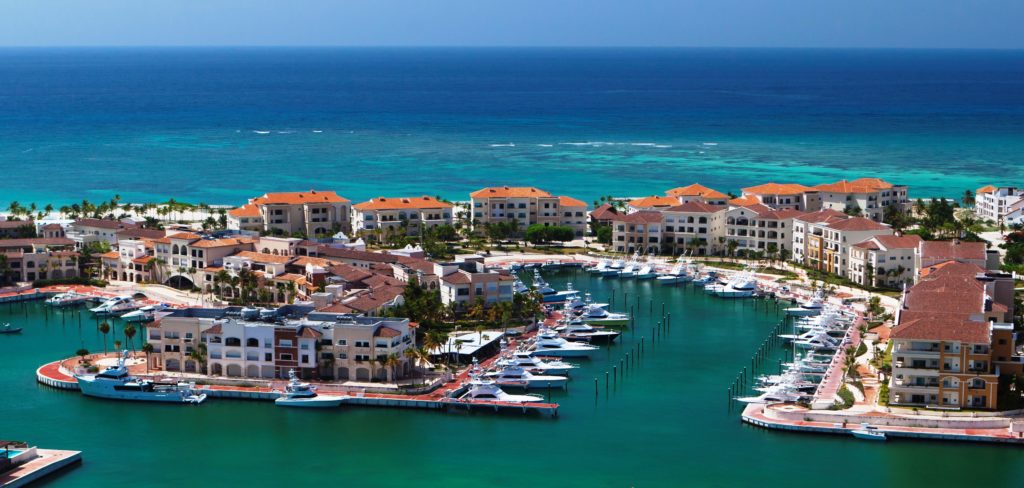
Expats have been coming to the Dominican Republic, starting businesses and launching services geared toward their fellow foreign residents, for three decades. In the Samana peninsula, for example, on the Dominican Republic’s northeast coast, French and Italian food brands line the shelves of the expat-run specialty grocery stores, and signs for businesses are in English, French, Italian, and Spanish. Foreigners do not get curious looks, because there are so many of them. The locals have enjoyed friendly relations with these settlers for a long time.
Punta Cana is ideal for retirement for several reasons. the official language is Spanish but most people speak or understand English. Even if your not fluent in either Spanish or English, do’t worry, the island accommodates people from all over the world, so try your native language here and discover who else has packed up and left your native home, or at least is passing through.
As we all get older (yup it’s a fact we cant escape) thoughts of medical need become a little more important. Most prescription medications are available over the counter. Private clinics are available to expatriates for an affordable fee. A day at the hospital will usually run you under $75 abroad. This is a strong reason why many are choosing to retire in Dominican Republic.
The Big Monthly Expenses
Apartment (1 bedroom) in City Centre $500AUD
Basic (Electricity, Heating, Water, Garbage) for an 85m² Apartment $80AUD
Internet (10 Mb/s, Unlimited Data, Cable/ADSL) $53AUD
Food (excluding alcohol and dining out) $370AUD
Cost of living in Punta Cana
$1,463.23AUD/mo
4. Why to expats love Merida?
What is it with ex pats and Merida? Traveling through South and Central America a couple of years ago, when I mentioned to our travelling companions that we were going to Mexico the next breath was in response, …. “no we’re not going to Merida.” All this talk of Merida and seeing the city on so many ex pat retirement site it just has to be on our list.
Mérida, the ambrosial capital of Yucatán, serves up Mayan culture, historic architecture, and more riffs on pork belly than you can imagine. Set apart from the rest of Mexico both geographically and culturally, the peninsular state of Yucatán boasts a true gem in its splendid capital city, Mérida. Historic squares rich with Spanish and French colonial architecture—and we’re talking literally rich, as this was home base for many millionaires and their businesses during the 18th and 19th centuries—form the background for a city rife with bustling markets, European-influenced Yucatecan cuisine, and plenty of activities to lure increasing numbers of U.S. tourists. In fact, quite a few decide to stay and retire…or set up new businesses.
Merida is on our radar and we know that in the not too distant future we’ll be here for a while.
The Big Monthly Expenses
Apartment (1 bedroom) in City Centre $285AUD
Basic (Electricity, Heating, Water, Garbage) for an 85m² Apartment $74AUD
Internet (10 Mb/s, Unlimited Data, Cable/ADSL) $30AUD
Food (excluding alcohol and dining out) $310AUD
Cost of living in Merada
$ 974.24AUD/mo
5. San Salvador, El Salvador – The Overlooked Gem of Central America
You don’t hear much about the country of El Salvador, and if you do it is usually bad news – the violence, drugs or the gangs. Yes, El Salvador has these things but so does every other country in the world including the United States and here at home in Australia, just pick up today’s paper or check the Internet. El Salvador is typical of most countries in Latin America and has its inherent charms and endemic problems. It is a relaxing tropical paradise and a sweltering chaos storm all at once.
The people here live well. The soil is fertile, the coffee world-class. There are more than 20 volcanoes in all, only a few active, arranged along two east-west mountain ranges. The River Lempa bisects the country. The population of El Salvador is nearing 7 million people, of which 2 million live in the capital city, San Salvador. San Salvador boasts two super malls: Metrocentro and the newer Multi-Plaza. These are multi-story fashion, jewellery, art, bookstores, and food court laden edifices with anything and everything you could think of.
There are two seasons in El Salvador, the wet (May through October) and the dry (November through April). Temperatures run from as low as 15c to the high 3o’s. Along the coast, so it can get a little steamy and uncomfortable if you’re not used to the tropics.
The Big Monthly Expenses
Apartment (1 bedroom) in City Centre $285AUD
Basic (Electricity, Heating, Water, Garbage) for an 85m² Apartment $74AUD
Internet (10 Mb/s, Unlimited Data, Cable/ADSL) $30AUD
Food (excluding alcohol and dining out) $310AUD
Cost of living in San Salvador
$ 974.24AUD/mo
Of course there are many more cities in Central America that are worthy of a mentioning, so go explore them for yourselves. What cities would you mention. Where in the world would you live? Could you live on $100 per day (or less). We’d love your hear your stories in the comments.
Sources:
www.expatistan.com/cost-of-living
Contact Us
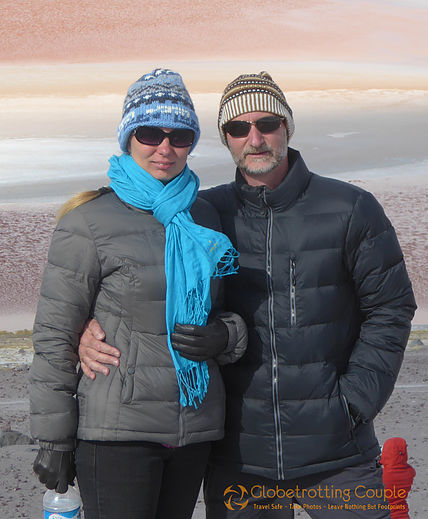 |
While we are traveling, we may be off the grid for weeks at a time. We will do our best to respond as quickly as possible. Please be clear on the subject as well as any requests you may have. For our followers, feel free to send a note and say hello. We love hearing … Continue reading |
|---|
